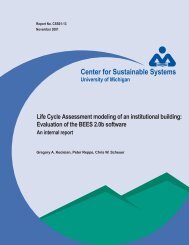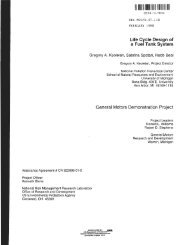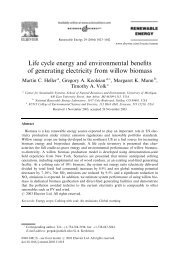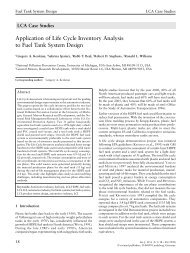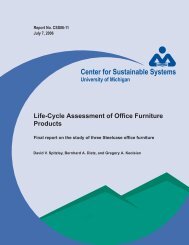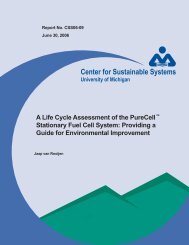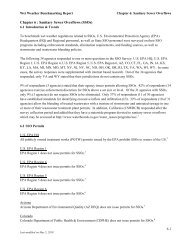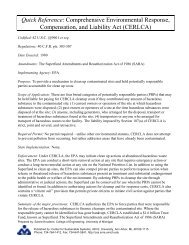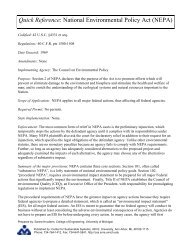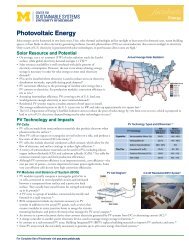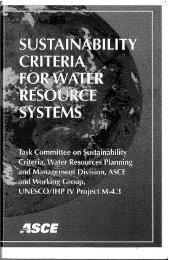Life Cycle Optimization of Residential Air Conditioner Replacement
Life Cycle Optimization of Residential Air Conditioner Replacement
Life Cycle Optimization of Residential Air Conditioner Replacement
You also want an ePaper? Increase the reach of your titles
YUMPU automatically turns print PDFs into web optimized ePapers that Google loves.
Producer costs for higher and lower efficiency units were extrapolated to higher and lowerefficiency units. These results were then approximated by the linear regression in Figure 3.4.$4,500$4,000$3,500$3,000$2,500$2,000$1,500$1,000$500$0y = 134.86x + 1379.8R² = 0.99540 5 10 15 20SEER ValueExtrapolated ValuesReverse Engineering DataPointsFigure 3.4: Consumer Price Model for CAC Purchase and Installation3.2 ShippingTo estimate the shipping distance each unit traveled, the locations <strong>of</strong> several majormanufacturing facilities producing residential central air conditioning units were located bysearching manufacturers’ websites and annual reports. The results are presented in Table 3.4.Table 3.4: Major <strong>Residential</strong> <strong>Air</strong> <strong>Conditioner</strong> Manufacturing LocationsLocation Manufacturer Source Latitude LongitudeMarshalltown, IA Lennox Company Website 42.1 ‐92.9Tyler, TX Trane 2006 Annual Report 32.4 ‐95.3Houston, TX Goodman 2008 Annual Report 29.8 ‐95.4Fayetteville, TN Goodman 2008 Annual Report 35.2 ‐86.6Fort Smith, AR Rheem Company Website 35.4 ‐94.4The approximate latitude and longitude for each location being modeled was used to determinethe distance, d, between the destination <strong>of</strong> each manufacturing site using the haversineformula,dcosh sin sin cos cos cos 6371 where lat 1 and lon 1 refers to the latitude and longitude <strong>of</strong> the origin and the lat 2 and lon 2 refersto the latitude and longitude <strong>of</strong> the destination.The distance values from the function given above were compared to driving distances foundwith Google maps. As a result, it was found that a multiplier <strong>of</strong> 1.25 could be used to betterapproximate the additional distance required by road travel. The weight function described inSection 3.1.3 was used to approximate the shipping weight <strong>of</strong> the outdoor units. The weight <strong>of</strong>



